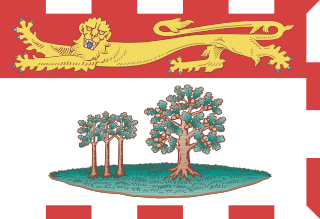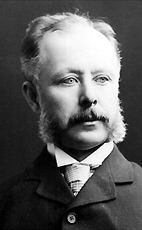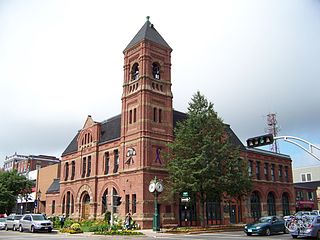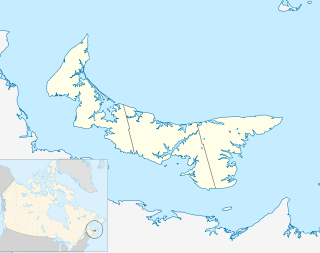This article includes a list of references, related reading or external links, but its sources remain unclear because it lacks inline citations .(February 2012) (Learn how and when to remove this template message) |
John Frederick Whear (January 1, 1867 – 1951) was a lawyer and political figure in Prince Edward Island, Canada. He represented 5th Queens in the Legislative Assembly of Prince Edward Island from 1900 to 1904 as a Liberal member.

Prince Edward Island is a province of Canada consisting of the Atlantic island of the same name along with several much smaller islands nearby. PEI is one of the three Maritime Provinces. It is the smallest province of Canada in both land area and population, but it is the most densely populated. Part of the traditional lands of the Mi'kmaq, it became a British colony in the 1700s and was federated into Canada as a province in 1873. Its capital is Charlottetown. According to the 2016 census, the province of PEI has 142,907 residents.

5th Queens was an electoral district in the Canadian province of Prince Edward Island, which elected two members to the Legislative Assembly of Prince Edward Island from 1873 to 1993. The district was also known as Charlottetown Common until 1939.

The Legislative Assembly of Prince Edward Island, along with the Queen of Canada in Right of Prince Edward Island, represented by the Lieutenant-Governor of Prince Edward Island, forms the parliament of the province. The General Assembly meets at Province House, which is located at the intersection of Richmond and Great George Streets in Charlottetown.
He was born in Charlottetown, Prince Edward Island, the son of John Whear and Margaret Barnard. He studied at Prince of Wales College, went on to study law with Louis Davies and was called to the bar in 1890. In 1894, Whear married Florence J. Murchison. He was elected to Charlottetown City Council in 1900 and 1902, also serving as acting mayor. Whear was a member of the province's Executive Council. He was later named postmaster for Charlottetown.

Charlottetown is the capital and largest city of the Canadian province of Prince Edward Island, and the county seat of Queens County. Named after Charlotte of Mecklenburg-Strelitz, queen consort of King George III of the United Kingdom, Charlottetown was originally an unincorporated town that incorporated as a city in 1855.

Sir Louis Henry Davies was a Canadian lawyer, businessman and politician, and judge from the province of Prince Edward Island. In a public career spanning six decades, he served as the third Premier of Prince Edward Island, a federal Member of Parliament and Cabinet minister, and as both a Puisne Justice and the sixth Chief Justice of Canada.

The Charlottetown City Council is the governing body for the city of Charlottetown, the county seat of Queen's County, Prince Edward Island, Canada. The most recent civic election took place in November, 2014. City council meets at Charlottetown City Hall.






